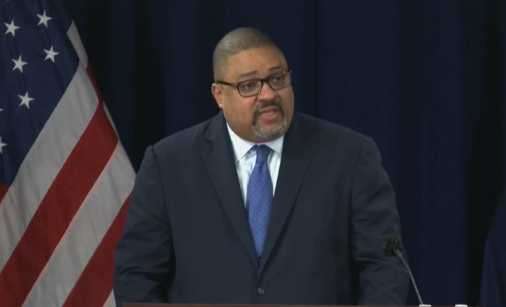The Los Angeles Times, against the wishes of the Pentagon, posted two pictures of soldiers posing with Afghan body parts taken in 2010.
The two photos were part of a set of 18 supplied to them by an unnamed soldier who served with the 82nd Airborne’s 4th Brigade Combat Team from Fort Bragg, N.C.
The soldier reportedly told the Los Angeles Times that he wanted “to draw attention to the safety risk of a breakdown in leadership and discipline.” Whether the photos were necessary for that purpose is open for debate, since that Brigade is now under new command. The commander of the brigade’s 2nd Battalion and the Battalion’s top noncommissioned officer were relieved of duty and ordered home in 2010 for an unrelated incident involving briefings.
Officials with the military asked that the Times not post any of the pictures. Pentagon spokesman Captain John Kirby spoke of the images and the conduct displayed by the soldiers posing in them, saying it “most certainly does not represent the character and the professionalism of the great majority of our troops in Afghanistan…. Nevertheless, this imagery — more than two years old — now has the potential to indict them all in the minds of local Afghans, inciting violence and perhaps causing needless casualties.” Kirby went on to say that necessary precautions have been put in place to protect the troops from any possible backlash that the photos may cause.
In the Times article, Times Editor Davan Maharaj said, in defense of the decision to post the photos, “After careful consideration, we decided that publishing a small but representative selection of the photos would fulfill our obligation to readers to report vigorously and impartially on all aspects of the American mission in Afghanistan, including the allegation that the images reflect a breakdown in unit discipline that was endangering U.S. troops.”
The United States Embassy in Kabul released a statement on the images, saying, “Such actions are morally repugnant, dishonor the sacrifices of hundreds of thousands of U.S. soldiers and civilians who have served with distinction in Afghanistan, and do not represent the core values of the United States or our military.”
This latest release of imagery taken by U.S. troops is only the most recent in a string of releases that has taken place recently. It has been a tough year for the United States military in Afghanistan as they struggle to stay ahead of the backlash that releases of this sort tends to unleash.
First, this year, video showing U.S. Marines urinating on bodies of enemy combatants was posted on a website. Then shortly after, the unintentional burning of the Qurans took place at Bagram Air Base. Insurgents and Afghan civilians alike retaliated when those incidents surfaced, stirring up chaos throughout the region.
Prior to the release of these most recent images of misconduct, United States officials struggled to tamp down the anger over the killings carried out by Army Staff Sgt. Robert Bales after he carried out the unauthorized nocturnal raid where 17 Afghan villagers, including women and children, were gunned down in their homes.
In Afghanistan’s capital of Kabul, Marine Corps Gen. John R. Allen, commander of the International Security Assistance Force, issued a statement strongly condemning the actions depicted in the photos.
“The actions of the individuals photographed do not represent the policies of ISAF or the U.S. Army,” Allen said. “This behavior and these images are entirely inconsistent with the values of ISAF and all service members of the 50 ISAF countries serving in Afghanistan.”
Allen said in a release that the ISAF is working with the Afghan authorities, examining the facts and circumstances. He also said that the incident is being thoroughly investigated, adding that the ISAF has a strict policy for the handling of enemy remains and dictates they be processed as humanely as possible.
The Times said that they had contacted the Pentagon and asked that Army officials contact all of the active duty soldiers depicted in the photos for a comment to the Times, they were declined. The Times also attempted to contact seven others by email and facebook, one declined to comment and the others did not respond.
Pentagon spokesman George Little said in a release, “An investigation that could lead to disciplinary measures is under way. Anyone found responsible for this inhuman conduct will be held accountable in accordance with our military justice system.”
Little added, “The Secretary (Panetta) is also disappointed that despite our request not to publish these photographs, the Los Angeles Times went ahead. The danger is that this material could be used by the enemy to incite violence against U.S. and Afghan service members in Afghanistan.”






